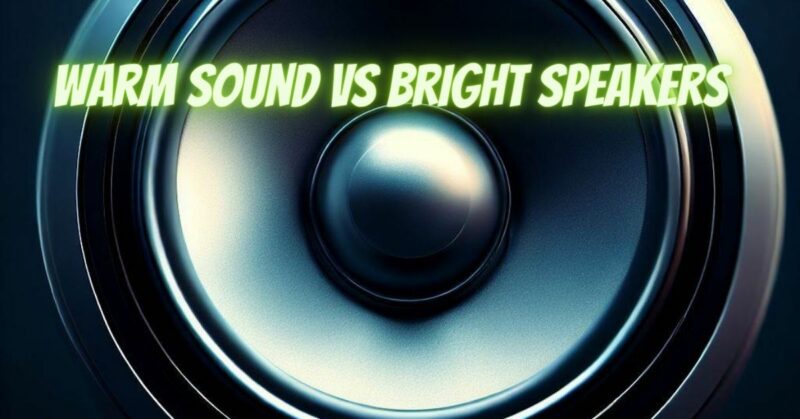The world of audio enthusiasts is often filled with discussions about the sonic qualities of speakers, with two commonly used terms being “warm sound” and “bright sound.” These descriptors help convey the unique tonal characteristics of speakers and influence listener preferences. In this article, we’ll explore the distinctions between warm and bright sound speakers, delve into their sonic characteristics, and discuss how to choose the right speakers for your audio setup and listening preferences.
Warm Sound Speakers: A Cozy Musical Embrace
Warm sound speakers are renowned for their comforting and mellow quality, creating an inviting and harmonious listening experience. To better understand warm sound speakers, let’s explore their key characteristics:
- Emphasis on Low and Mid Frequencies: Warm sound speakers tend to emphasize the lower frequencies, particularly in the midrange. This focus provides a full-bodied and harmonically rich sound.
- Smooth and Rounded Tones: Warm sound speakers produce tones that are smooth and non-fatiguing. The notes blend together seamlessly, creating a pleasing and enveloping sonic environment.
- Subtle Harmonic Distortion: Warm tones may involve the introduction of even-order harmonic distortion, which adds subtle coloration and contributes to the overall warmth.
- Ideal for Acoustic and Jazz: Warm sound speakers are often preferred for genres such as acoustic music, jazz, and classical, where the mellowness and depth of tone enhance the emotional impact of the music.
Bright Sound Speakers: Clarity and Precision
In contrast, bright sound speakers are known for their vibrancy, clarity, and precision. They emphasize the high-frequency range, resulting in a crisp and articulate tone. Here are the key characteristics of bright sound speakers:
- Emphasis on High Frequencies: Bright sound speakers place a notable emphasis on the high frequencies, particularly in the treble range. This focus provides clarity and detail to the sound.
- Enhanced Attack and Definition: Bright sound excels at reproducing transients with precision, highlighting the attack and decay of musical notes. This creates a sense of immediacy and energy.
- Forward and Articulate: Bright speakers often project a sound that is more forward and “in your face.” This can be engaging and well-suited for genres that demand high-energy reproduction, such as rock or metal.
- Ideal for Rock and Pop: Bright sound speakers are often favored in rock, pop, and electronic music, where the clarity and articulation of the sound contribute to the overall impact of the music.
Factors Influencing Speaker Sound
Several factors influence whether a speaker produces a warm or bright sound:
- Driver Design: The design and materials of the speaker drivers (woofers, tweeters, and midrange) significantly impact the speaker’s sound character. Different driver materials and designs emphasize different frequencies.
- Crossover Design: The crossover network in a speaker system determines how different frequencies are distributed among the drivers. The crossover design can influence the tonal balance of the speaker.
- Enclosure Type: The type of speaker enclosure (e.g., ported, sealed, or horn-loaded) affects the speaker’s bass response and overall sound character.
- Room Acoustics: The acoustics of the listening room can also influence the perceived sound character of the speakers. Room reflections and absorption can impact the sound’s timbre.
Choosing the Right Speakers
Selecting the right speakers depends on various factors, including your musical preferences, the type of audio you enjoy, and the listening environment:
- Musical Genre: Consider the genre of music you primarily listen to. If you enjoy acoustic or classical music, warm sound speakers may be ideal. On the other hand, rock or electronic music enthusiasts may prefer bright sound speakers.
- Listening Environment: Take into account the acoustics of your listening room. The room’s characteristics can interact with speaker sound, potentially enhancing or diminishing certain tonal qualities.
- Personal Preference: Ultimately, your personal taste and listening preferences play a significant role. Listen to a variety of speakers to determine which sound character resonates with you the most.
Warm and bright sound speakers offer distinct tonal qualities, each contributing to the rich landscape of audio enjoyment. Understanding these characteristics and their influence on your listening experience can help you make an informed decision when choosing speakers for your audio setup. Whether you’re drawn to the cozy embrace of warmth or the sparkling brilliance of brightness, the right speakers will complement your musical tastes and enhance your audio listening experience.


